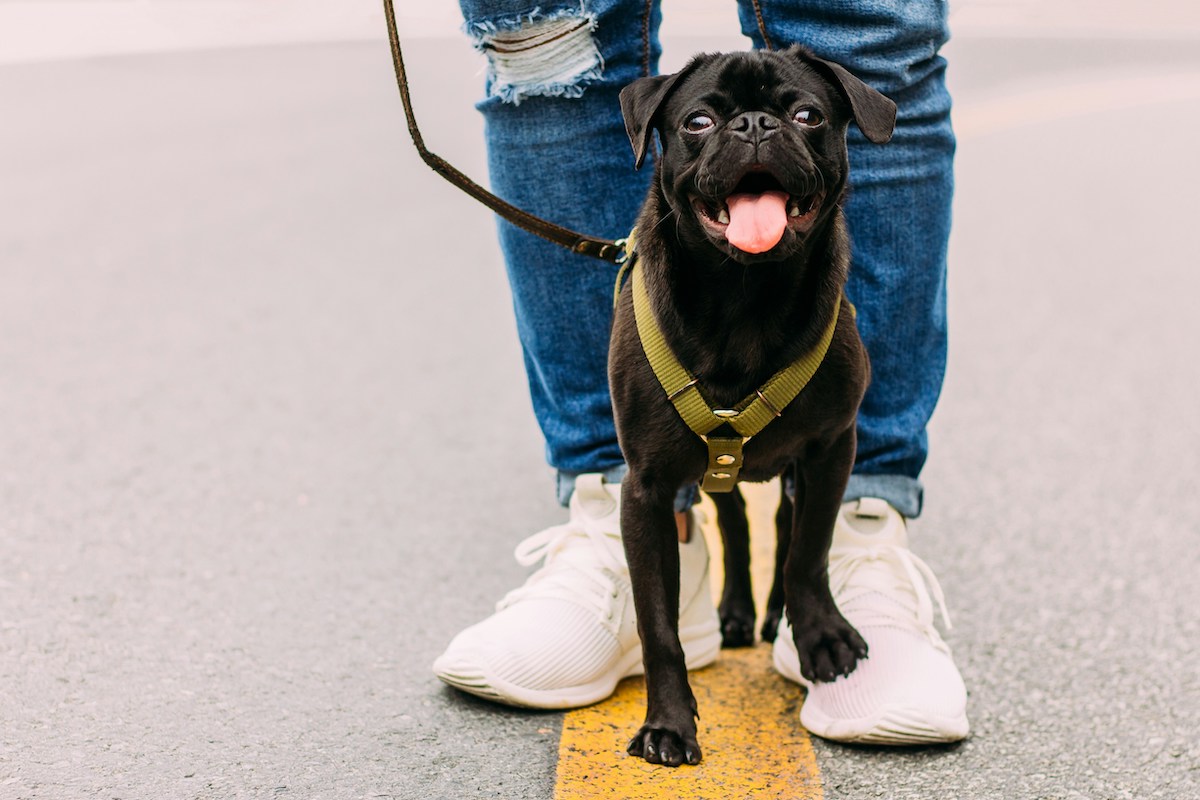It’s no secret that walking your dog is an essential aspect of raising a happy and healthy pup. Every dog will have their own specific exercise needs, but you can expect to walk your dog as little as a few times per week or as often as a few times per day.
No matter how often you get fresh air with your furry friend, it’s essential to choose the correct times to go outside. As one canine expert discovered, walking your dog during ‘danger hours’ could actually do more harm than good.
Avoid Walking Your Dog During These Hours
Nick Jordan is the founder of Your Service Animal, an online company that offers education and resources for those looking to register an Emotional Support Animal. He strongly believes in keeping dogs indoors during “danger hours,” which occur from noon to 4 p.m. in the spring and summer months. This is because these afternoon hours pose various risks that even experienced pet owners often overlook.
Walking your dog on a sunny summer afternoon may sound like a slice of heaven, but it can easily turn into a major problem if you’re caught unprepared.

“This midday window is the absolute worst time to walk your dog,” Jordan agrees. “The risks aren’t just about comfort; they can also lead to serious injuries and health emergencies.”
Heat is the most prevalent risk during spring and summer afternoons, though there are a few sneaky ways it can wreak havoc on your dog’s health before you even notice. From avoiding heatstroke while walking your dog to keeping their feet protected from scorching concrete, here’s what to consider before exercising your dog during the hottest time of the day.
How To Avoid Heat Stroke While Walking Your Dog
All dogs need less exercise during the warmer months, but it’s still easy to overdo it. Overheating can occur when a dog is unable to regulate their own body temperature through panting. Some dogs, like brachycephalic breeds with ‘squished’ faces, have an especially hard time regulating their temperature through breathing, so these dogs can be even more at risk of developing complications from the heat.
Pay attention to signs of discomfort, overheating, and heat stroke, as these can be fatal in severe cases. According to Ballantyne Veterinary Clinic, common signs of overheating in dogs include:
- Excessive panting and drooling
- Lethargy or weakness
- Dry nose and mouth
- Discolored gums that may be red, pale, or even blueish in color
- Vomiting or diarrhea
- Neurological changes like confusion, stumbling, or walking in circles
- Unresponsiveness
- Collapse or unconsciousness, in severe cases
Jordan also advises owners to consider whether their dogs may need additional sun protection. “The UV index reaches its highest points during these hours as well,” he explains, “increasing the risk of heatstroke and sunburn, especially for dogs with short or light-colored coats.”
Hot Summer Sidewalks
If you’re walking your dog in the summer, beware of heat coming from the ground, too. Our shoes keep our feet protected from sizzling sidewalks and concrete, but our dogs don’t have this luxury.
To test whether the ground is too hot for your dog’s paws to walk on, Jordan and many pet experts recommend the tried-and-true ‘5-second rule.’ “Place the back of your hand against the pavement and hold it there for five seconds,” instructs Jordan. “If you can’t comfortably keep your hand there for the full count, it’s too hot for your dog’s paws.”

Asphalt temperatures can soar 40-60°F higher than the air temperature, beginning before the sun even reaches its peak. Because concrete absorbs more light and, therefore, heat than most other surfaces, it may be scorching despite a pleasant air temperature.
Luckily, you have a few options to protect your dog’s paws from hot summer sidewalks. You can try protective shoes for dogs or a versatile travel carrier for small dogs, but the easiest choice is to walk your dog during a cooler time of day.
The Best Time For Walking Your Dog
Experts like Jordan agree that mornings or evenings are the best times of day to walk a dog, especially during the summer. Not only do you avoid the highest temperatures of the day, but you can also begin or end your day on a positive note.
“The best times to walk your dog are before 8:00 AM or after 7:00 PM,” Jordan explains. “Early morning offers cooler temperatures when pavement hasn’t absorbed the day’s heat. The air is fresher, traffic is lighter, and it provides exercise before you head to work. Evening walks after sunset are equally beneficial as surfaces have cooled down and the UV index is low. These walks serve as perfect wind-down activities before bedtime, helping establish healthy sleep routines.”
Whether you shorten your summertime walks or find new ways to give your furry friend the exercise they need to thrive, avoiding the ‘danger hours’ while walking your dog is the best way to keep them safe all summer long.
Ready to join the pack and receive even more Dog Mom Blog news and updates? Be sure to catch up with me on TikTok or head to the Home Page to read the latest articles!


Leave a Reply